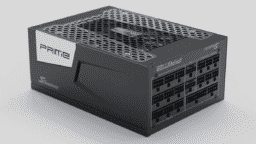Picking the right computer can be a challenge. Some need a fast notebook for school. Others want an affordable, light, and easy machine for work or play. You may have heard about Chromebooks but feel uncertain in the mix of choices like Windows PCs or tablets.
You might wonder if these machines with ChromeOS can really handle Google Docs, Google Sheets, web browsing, Android apps, and your cloud storage needs.
One surprising fact shows that more than 37 million Chromebooks were shipped worldwide in 2021. Their blend of quick boot times, affordable pricing, and long battery life has grabbed attention across schools and offices.
This guide reviews the pros and cons of Chromebooks with real-world examples and direct comparisons. I explain how the operating system works with tools such as google workspace, google drive, and google docs without confusing jargon.
After reading this post, you will know if a Chromebook fits into your daily routine or if you should stick with a traditional laptop instead. Stick around; it may change what’s in your backpack tomorrow!
What is a Chromebook?

A Chromebook runs Chrome OS, a fast operating system built on Linux. It opens doors to lightweight computing and easy access to web apps such as Google Docs, Google Sheets, Gmail, and Google Drive cloud storage.
Experience smooth integration with tools like Google Workspace and Android apps from the Google Play Store. Boot-up takes only seconds thanks to quick SSD storage or eMMC storage.
Unlike Windows laptops or MacBooks, Chromebooks target online tasks using the google chrome browser. Most models weigh between 2.3 and 5 pounds, which suits users who value portability.
Many Chromebooks work for over ten hours on a single charge; some even stretch to 18 hours. Security gets a boost from features like sandboxing, automatic updates, and data encryption, and built-in parental controls for safer surfing sessions at any age group.
Local storage is usually modest – 32 GB or 64 GB – but it encourages you to save files in cloud services instead of filling up an internal hard drive.
Top 10 Advantages of Chromebook

1. Budget-Friendly Pricing
You can buy a Chromebook for under $200. Many models cost between $200 and $500, perfect if you need basic functions like browsing with the Google Chrome browser or checking email via Gmail. Parents and students appreciate the low price.
Even with basic hardware like eMMC storage or entry-level CPUs, Chromebooks handle web tasks and run Android apps from the Google Play Store without a high expense. They work reliably and keep technology within reach.
2. Fast Boot Times and Performance
Chromebooks wake up in under 10 seconds. You jump straight into Google Chrome browser, Google Docs, or stream videos almost instantly. Short boot times keep you productive. The devices use eMMC storage or speedy SSD storage; lag rarely becomes an issue even when many browser tabs are open.
Automatic updates install security patches and new features without slowing things down. They excel at lightweight computing and suit anyone who needs immediate action rather than heavy gaming or advanced multimedia editing.
3. Seamless Google Ecosystem Integration
Sign in with one Google account and connect to Gmail, Google Drive, Calendar, YouTube, and more without hassle. You can work on a spreadsheet in Google Sheets or craft a presentation in Google Slides without installing extra software.
Users sync files and settings with ease. I have seen students and professionals boost their productivity with these smooth transitions. The system also supports linux apps for coding projects. Each function works in harmony across your devices.
4. Excellent Battery Life
Most Chromebooks last over ten hours on one charge; some models reach up to 18 hours, leaving many Windows laptops behind. They use energy-saving hardware and efficient processors.
The Google Chrome browser sends minimal background tasks. When you work in Google Workspace, battery performance stays strong. Even using Android apps rarely drains power. This reliability makes them a smart choice for busy days.
5. Built-in Security Features
Chromebooks shield your data efficiently. Automatic updates occur every few weeks for up to 8 years to keep you safe. Sandboxing isolates each app and website, reducing risks from harmful sites. Built-in antivirus checks add further protection.
The system runs these features behind the scenes without extra effort. Parental controls and secure apps help youngsters work safely in Google Docs. You get straightforward security in one package.

6. Simplicity and Ease of Use
Chrome OS remains clear and friendly. The interface shows icons and apps in a tidy layout. The single taskbar displays all core functions. Users find the system simple and easy to learn.
Even those switching from traditional notebooks settle in quickly. The design emphasizes essential features so you can focus on your work.
7. Automatic Updates and Maintenance
The system updates itself. Security and performance patches install automatically. You never fiddle with manual maintenance or spend on extra services. This self-care frees up your time.
Regular updates help fend off malware and improve battery life and speed. Technical hassles become a distant memory with a Chromebook.
8. Lightweight and Portable
Chromebooks impress with their low weight. Devices often tip the scale between 2 and 5 pounds. A unit like the Google Pixelbook Go weighs just 2.3 pounds. They slide into backpacks with ease, making travel a breeze. One can say they feel as light as a paperback. This portability pairs seamlessly with long battery life and reliability on the road.
9. Seamless Cloud Integration and Storage
Chromebooks sync files and settings to Google Drive automatically. Users enjoy 100GB of free cloud storage to hold photos, homework, or documents. Quick uploads make sharing fast and simple.
Internal storage can range from 32GB to 64GB, but many favor the cloud’s flexibility. Even offline, you can prepare files ahead using effective Chromebook offline functionality.
10. Parental Controls and Supervision Tools
Google Family Link offers a clear solution for parents. You set screen time limits, manage app downloads from the Google Play Store, and block risky apps.
For basic app management or setting healthy online habits, this option checks most boxes. Parents find this tool reliable. They simplify oversight without complicating the user experience.
Top 10 Drawbacks of Chromebook

1. Limited Offline Functionality
Chromebooks perform best with an internet connection. Many tasks rely on Google Drive, Google Docs, and Google Sheets within Google Workspace. Offline functionality exists for some files, but it feels restricted without Wi-Fi. Android apps and Linux apps run with similar limitations.
2. Software Incompatibility
Software compatibility can pose issues. Full Microsoft Office desktop versions and many advanced pro tools do not run on Chrome OS. Users must settle for online versions of Office or use Google Workspace apps. Professional software for multimedia editing or video editing often requires Windows or macOS.
3. Low Internal Storage
Most Chromebooks come with 32GB or 64GB of eMMC storage. This is lower than many affordable laptops that use SSD storage. The limited space becomes clear when storing large files or videos. Google encourages saving files in Google Drive instead of loading up the device. Local storage fills up quickly under heavy use.
4. Not Ideal for Gaming
High-end gaming needs powerful processors and advanced graphics. Chromebooks typically use entry-level GPUs and chipsets. Popular AAA titles like Cyberpunk 2077 cannot run on these devices due to software compatibility issues and limited storage capacity.
Platforms such as Nvidia GeForce Now provide a solution by streaming gameplay over an internet connection through the Google Chrome browser. Still, lag and input delay can disrupt fast-paced action or competitive matches.
5. Reduced Support for Professional Software
Chromebooks do not run full versions of creative software. Programs such as Adobe Premiere Pro or advanced Microsoft 365 often do not work on Chrome OS. While Google Docs and Google Sheets cover basic tasks, they lack features for in-depth multimedia editing or video editing.
Professionals in digital art or sound production may find that the system falls short.

6. Printing Can Be Frustrating
Printing presents real challenges. The end of Google Cloud Print in December 2020 left many without a simple solution. Although many network and Wi-Fi printers work, you must check that your device supports Chrome OS printing.
7. Limited Customization Options
Chromebooks cap your freedom to tweak software. Want to mess around with advanced display resolution settings or install high-powered pro tools? The Chromebook operating system locks most of that down tight. Even loading Linux apps from the Google Play Store has limits compared to full-featured desktop PCs.
For technology enthusiasts craving endless options, these devices feel more like a locked toolbox than an open workbench.
8. App Ecosystem Still Has Gaps
Although the Google Play Store provides many apps, some powerful pro tools never appear. Desktop programs for advanced video editing or full office suites are absent. Linux apps can fill some gaps, but sometimes run slowly on these devices.
9. Dependence on Google Services
Chromebooks rely heavily on Google’s tools. Cloud storage, Gmail, and Google Workspace apps form the core of the system. Users who work with alternatives outside this circle may find the integration limiting. While offline work is possible, an internet connection produces the best results.
10. Hardware Upgrade Impossibility
You cannot upgrade a Chromebook’s internals. Manufacturers build them as sealed units with hardware fixed to the board. Most models come with 32GB or 64GB of eMMC storage, which limits future enhancements. Users must choose the specifications that meet their needs at the time of purchase.
Who Benefits Most from Chromebook

Many people enjoy using Chromebooks, but some groups gain more from these affordable laptops. The technology works best for those who want fast, easy, and safe computing.
- Students and Educational Users: Schools that mix in-person and online lessons boost demand for Chromebooks due to their seamless cloud storage with Google Drive and long battery life.
- Business Professionals with Basic Needs: Office staff needing email, web browsing, video calls, or access to shared documents use them effectively for daily tasks.
- Senior Citizens and Tech Beginners: Simple menus and clear functions make Chromebooks friendly for older adults and new users. Built-in security safeguards personal data right away.
- Budget-Conscious Consumers: Families often choose Chromebooks for regular browsing, streaming on decent display resolution screens, or using Android apps. Chromebooks offer solid value without high prices.
- Frequent Travelers: Those needing portable devices for emails or cloud tasks appreciate their lightweight. Many Chromebooks weigh under three pounds, fitting easily into backpacks or carry-ons.
Who Should Avoid Chromebook

Chromebooks shine in web-based tasks, but they do not fit every need. Some users may find Chromebook limitations frustrating.
- Creative Professionals and Content Creators: Designers, filmmakers, and audio engineers need powerful systems for multimedia editing or video editing. Programs like Adobe Premiere Pro may not run on Chrome OS.
- Gamers and Entertainment Enthusiasts: Hardcore gamers require robust hardware that Chromebooks rarely offer. Game performance may suffer with the available components.
- Power Users and Tech Professionals: Those dependent on software compatibility with Windows or macOS often rely on specialized applications that do not run on Chrome OS.
- Users in Areas with Poor Internet Connection: Chromebooks do best with steady online access. Limited connectivity can hamper the performance of cloud tools.
- Users Dependent on Printing: Setting up printers on a Chromebook can be challenging. Printer support may not match that found on Windows PCs or MacBooks.
Conclusion

You have seen both the shine and the shadows of these affordable laptops. Fast boot times, long battery life, and easy Google Workspace tools make daily tasks quick and painless. Weaknesses like limited offline power, software compatibility headaches, and low local storage mean you should weigh your needs first.
Students or cloud-first workers will love features such as strong security and easy updates; video editors and pro tool users may need more muscle for heavy multimedia editing or gaming pursuits.
Weigh what matters most for you – sometimes less is truly more if it fits your routine just right.






